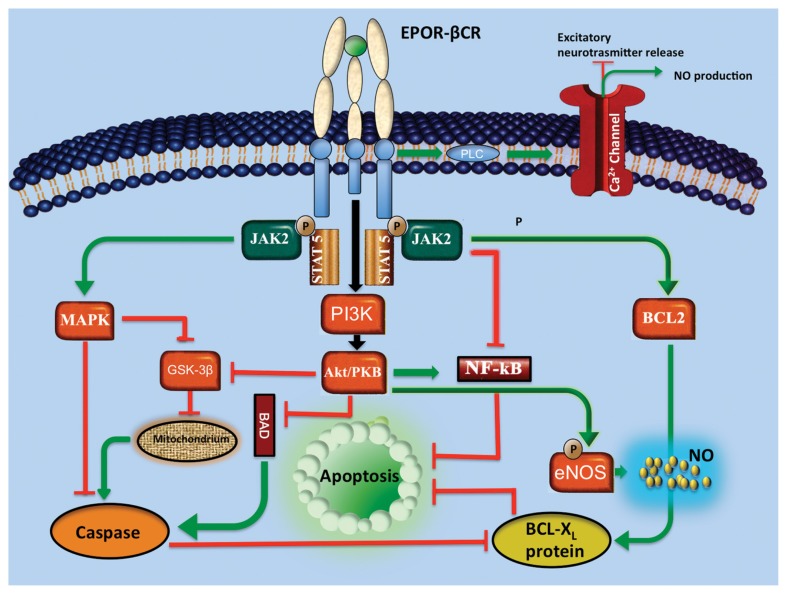Figure 2.
Main metabolic pathways involving NO in SAH. In endothelial cell (EC), NO is produced by NO synthase (eNOS) action. The soluble NO released from endothelial cells diffuses to adjacent smooth muscle cell (SMC) and activates soluble guanylate cyclase (GC). GC, in turn, produces cyclic guanosine monophosphate (cGMP), which activates intracellular calcium pumps thus sequestering free Ca2+ into intracellular sarcoplasmic reticulum and relaxing SMC. Following aneurysm bleeding hemorrhage, hemoglobin (Hb) binds NO thus reducing its availability. Hence, scavenging of NO results in a decrease of GC activity, which in return causes vasoconstriction. Furthermore, Hb directly inactivates GC by oxidization, thus leading to reduced production of cGMP. Finally, increased oxidative stress uncouples eNOS via Zn2+ thiolate oxidation resulting in a release of superoxide anion radical, further exacerbating oxidative stress and microvascular damage.

